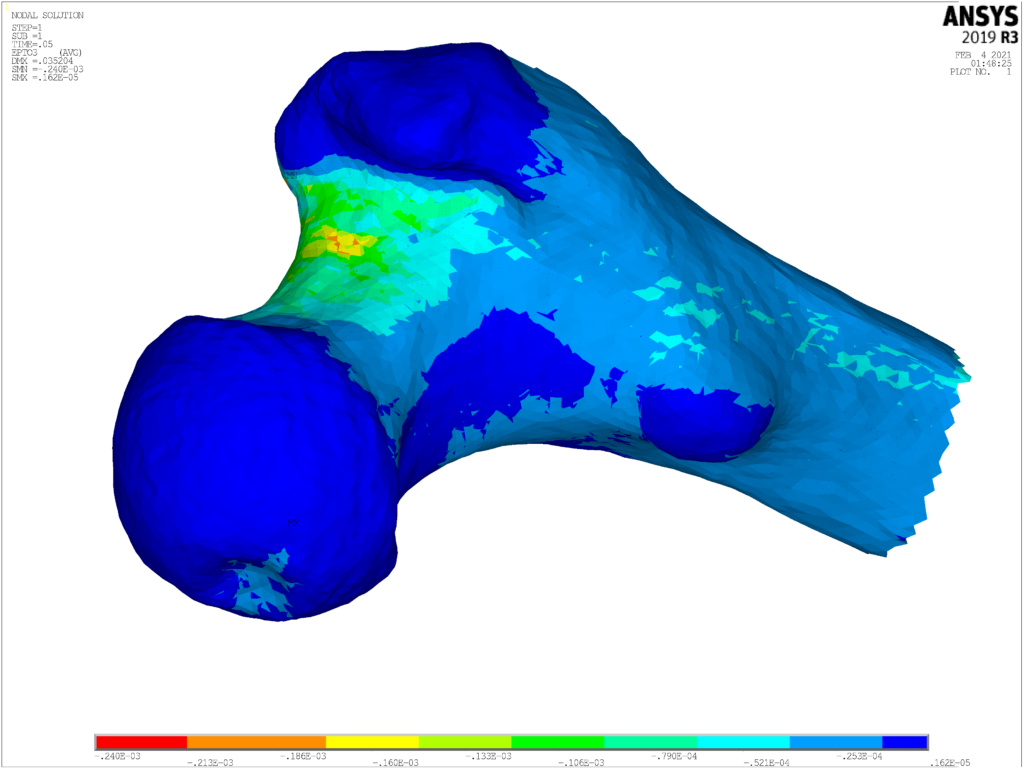CT2S - Computer Tomography to Strength
Short description
The CT2S (Computer Tomography to Strength) application was designed to predict the risk of hip fracture at the time of a CT scan, creating a patient-specific finite-element model of the femur. The CT2S pipeline comprises femur geometry segmentation, high-quality 3D mesh generation, element-wise material property mapping, and eventually finite-element model simulation. By using a disease progression model, this is now being extended to assess the Absolute Risk of Fracture up to 10 years (ARF10). In parallel with this, a solution known as BoneStrength is being developed (based on algorithms in CT2S and ARF10) to build an in silico trial application for bone-related drugs and treatments. Currently, the BoneStrength pipeline is being used on a cohort of 1000 digital patients to simulate the effect of an osteoporosis drug.
Results & Achievements
- M. Taylor, M. Viceconti, P. Bhattacharya, X. Li 2021. “Finite element analysis informed var-iable selection for femoral fracture risk predic-tion”, Journal of the Mechanical Behavior of Biomedical Materials, in press.
- C. Winsor, X. Li, M. Qasim, C.R. Henak, P.J. Pickhardt, H. Ploeg, M. Viceconti 2021. “Eval-uation of patient tissue selection methods for deriving equivalent density calibration for femo-ral bone quantitative CT analyses”, Bone, 143, 115759.
- Z. Altai, E. Montefiori, B. van Veen, M. A. Paggiosi, E. V. McCloskey, M. Viceconti, C. Mazzà, X. Li 2021. “Femoral neck strain pre-diction during level walking using a combined musculoskeletal and finite element model ap-proach”, PLoS ONE, 68. https://doi.org/10.1371/journal.pone.0245121
Objectives
- To develop an efficient digital twin solution for the estimation of long bone fracture risk in elderly patients (CT2S solution)
- To not only be able to evaluate the bone strength at present, but also predict the changes in the next 10 years (ARF10 solution)
- To extend the digital twin solution to predict other types of fracture, such as the vertebral
- To enable the running of large scale in silico clinical trials (BoneStrength solution, with a current target for bone treatments)
- To port these solutions on multiple HPC platforms across Europe and solve potential scalability issues
Collaborating Institutions
University of Bologna
University of Sheffield

